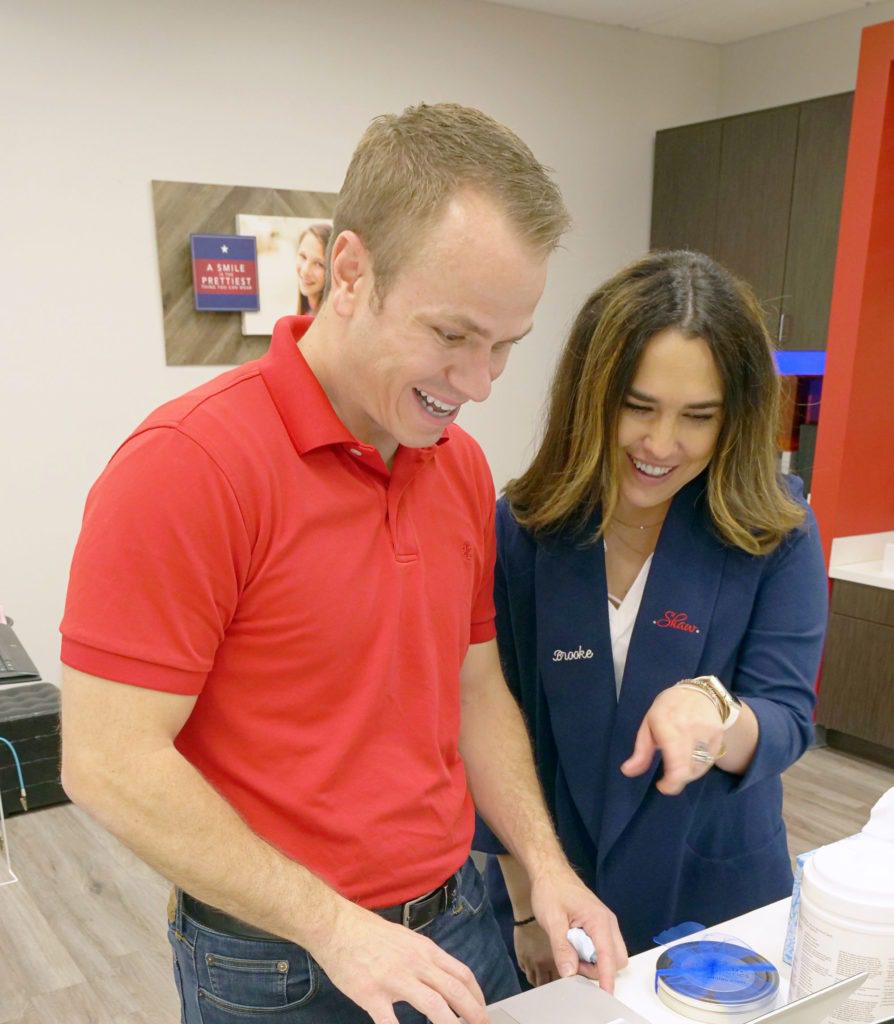Orthodontics for Adults
Orthodontic treatment isn’t just for children and teens. In fact, one in every five orthodontic patients is over the age of 21.

More Adults Are Pursuing Orthodontics
You’re never too old to benefit from orthodontic treatment.
Today, adults make up about one in every five orthodontic patients. Here’s why:
Looking Good
Orthodontic treatment can help correct crooked teeth or spaces that you’ve been self-conscious about for years.
It can give you the confidence and pride that come with straight teeth and a great smile.
Your Teeth Can Shift
Believe it or not, your teeth don’t stop moving in adolescence.
Teeth that seemed straight and aligned in youth could have shifted later in life. This can lead to jaw pain, trouble brushing, or a smile you’re unhappy with.
Maintaining Dental Health
If you leave misaligned teeth untreated, you may end up with other dental problems such as tooth decay and gum disease.
You may also notice difficulty chewing or abnormal wear of the surface of your teeth.
Frequently Asked Questions About Adult Orthodontics
Why is orthodontic treatment important for adults? Expand
- Can help prevent or improve periodontal problems
- Can help prevent or reduce further bone loss around teeth
- Improves ability of the dentist to restore missing teeth
- Improves aesthetics for a better smile and facial appearance
- Improves function of teeth
- Improves self-confidence and self-esteem
- Improves oral health
Does orthodontic treatment work for adults? Expand
Yes. Healthy teeth can be moved at any age. Many orthodontic problems can be corrected as easily for adults as for children.
Orthodontic forces move teeth in the same way for both adults and children.
Do my appliances have to show? Expand
Many options are available today to minimize the appearance of braces. Today’s braces are smaller and sleeker, and some are next-to-invisible.
Dr. Shaw can advise you about options that will fit your particular needs. You can find more information about types of braces, including Invisalign, here.
These options allow you to have flexibility and discretion during your treatment.
Will orthodontic treatment fit my lifestyle? Expand
You can do almost anything during orthodontic treatment – sing, play a musical instrument, dine out, kiss, and even have your picture taken.
Some adjustments may be necessary. But, if you’re like the vast majority of adult patients, you’ll adjust quickly.
New techniques and materials have made wearing braces more comfortable and convenient than ever.
Am I a good fit for orthodontic treatment? Expand
During your consultation, Dr. Shaw can determine if you will benefit from treatment.
After carefully analyzing the nature of your needed correction, Dr. Shaw will recommend the best course of treatment for improving your smile, including the different types of braces that are best for you.
I’m missing some teeth. Can orthodontic treatment improve my bite? Expand
Orthodontic treatment can create or hold space to replace missing teeth.
Dr. Shaw will work with your dentist or dental specialist. They will provide bridges or implants so that you can achieve the best result.
I’ve been treated for gum disease. Can my teeth be straightened? Expand
Dr. Shaw will consult with your dentist and/or periodontist about the health of your gums.
If you are a candidate for orthodontic treatment, you will continue regular supervision with your dentist and periodontist. In many cases, tooth alignment can improve the health of the gums.
How much does treatment cost? Expand
The cost of orthodontic treatment will depend on many factors, including the severity of the problem, its complexity and length of treatment. Dr. Shaw will be glad to discuss the cost with you before treatment begins.
You’ll find that braces are more affordable today than ever. We offer a variety of convenient payment plans and accept many dental insurance plans that include orthodontic benefits.
Why choose an orthodontist over aligners that come in the mail? Expand
Orthodontists are dental specialists who diagnose, prevent and treat dental and facial irregularities.
Dr. Shaw received an additional three full years of specialized education beyond dental school to learn the proper way to align and straighten teeth.
Only those with this formal education may call themselves “orthodontists,” and only orthodontists may be members of the American Association of Orthodontists (AAO).
